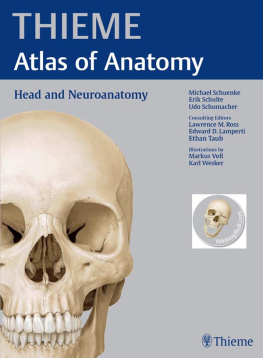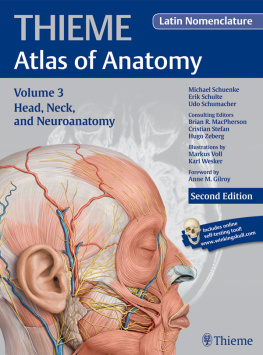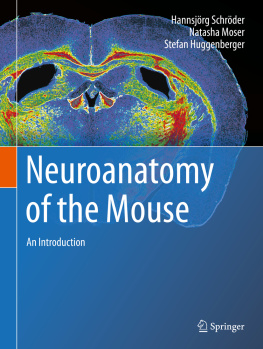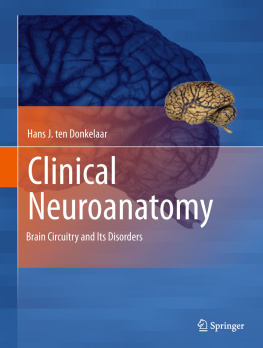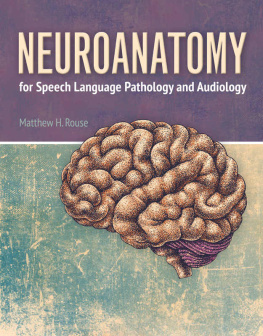Patestas Maria - A Textbook of Neuroanatomy
Here you can read online Patestas Maria - A Textbook of Neuroanatomy full text of the book (entire story) in english for free. Download pdf and epub, get meaning, cover and reviews about this ebook. year: 2016, publisher: John Wiley & Sons, Incorporated, genre: Romance novel. Description of the work, (preface) as well as reviews are available. Best literature library LitArk.com created for fans of good reading and offers a wide selection of genres:
Romance novel
Science fiction
Adventure
Detective
Science
History
Home and family
Prose
Art
Politics
Computer
Non-fiction
Religion
Business
Children
Humor
Choose a favorite category and find really read worthwhile books. Enjoy immersion in the world of imagination, feel the emotions of the characters or learn something new for yourself, make an fascinating discovery.

- Book:A Textbook of Neuroanatomy
- Author:
- Publisher:John Wiley & Sons, Incorporated
- Genre:
- Year:2016
- Rating:3 / 5
- Favourites:Add to favourites
- Your mark:
- 60
- 1
- 2
- 3
- 4
- 5
A Textbook of Neuroanatomy: summary, description and annotation
We offer to read an annotation, description, summary or preface (depends on what the author of the book "A Textbook of Neuroanatomy" wrote himself). If you haven't found the necessary information about the book — write in the comments, we will try to find it.
A Textbook of Neuroanatomy — read online for free the complete book (whole text) full work
Below is the text of the book, divided by pages. System saving the place of the last page read, allows you to conveniently read the book "A Textbook of Neuroanatomy" online for free, without having to search again every time where you left off. Put a bookmark, and you can go to the page where you finished reading at any time.
Font size:
Interval:
Bookmark:
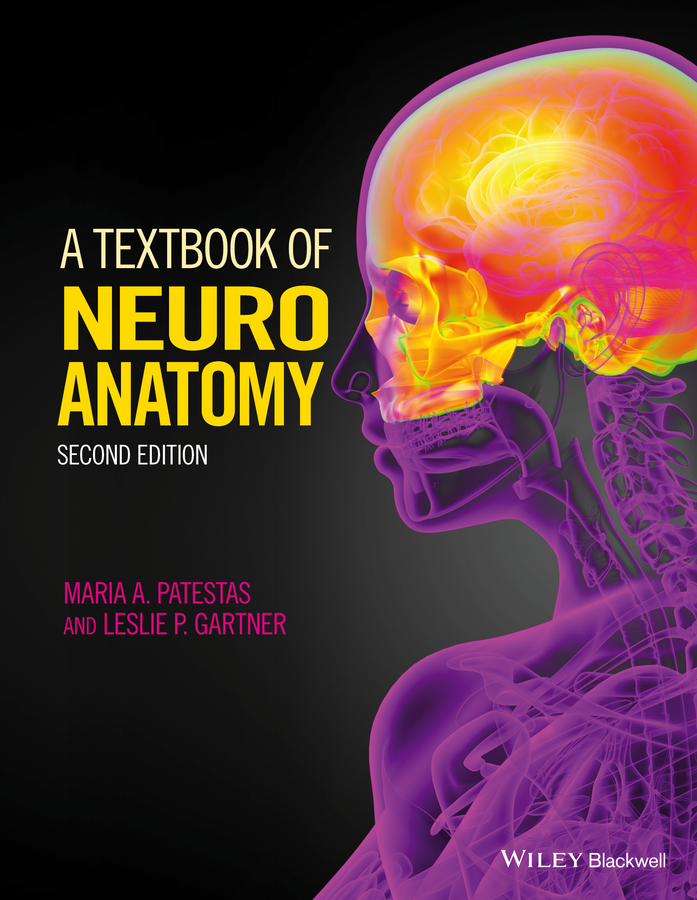
Copyright 2016 by John Wiley & Sons, Inc. All rights reserved
Published by John Wiley & Sons, Inc., Hoboken, New Jersey
Published simultaneously in Canada
No part of this publication may be reproduced, stored in a retrieval system, or transmitted in any form or by any means, electronic, mechanical, photocopying, recording, scanning, or otherwise, except as permitted under Section 107 or 108 of the 1976 United States Copyright Act, without either the prior written permission of the Publisher, or authorization through payment of the appropriate per-copy fee to the Copyright Clearance Center, Inc., 222 Rosewood Drive, Danvers, MA 01923, (978) 750-8400, fax (978) 750-4470, or on the web at www.copyright.com. Requests to the Publisher for permission should be addressed to the Permissions Department, John Wiley & Sons, Inc., 111 River Street, Hoboken, NJ 07030, (201) 748-6011, fax (201) 748-6008, or online at http://www.wiley.com/go/permission.
Limit of Liability/Disclaimer of Warranty: While the publisher and author have used their best efforts in preparing this book, they make no representations or warranties with respect to the accuracy or completeness of the contents of this book and specifically disclaim any implied warranties of merchantability or fitness for a particular purpose. No warranty may be created or extended by sales representatives or written sales materials. The advice and strategies contained herein may not be suitable for your situation. You should consult with a professional where appropriate. Neither the publisher nor author shall be liable for any loss of profit or any other commercial damages, including but not limited to special, incidental, consequential, or other damages.
For general information on our other products and services or for technical support, please contact our Customer Care Department within the United States at (800) 762-2974, outside the United States at (317) 572-3993 or fax (317) 572-4002.
Wiley also publishes its books in a variety of electronic formats. Some content that appears in print may not be available in electronic formats. For more information about Wiley products, visit our web site at www.wiley.com.
Library of Congress Cataloging-in-Publication Data
Names: Patestas, Maria Antoniou, author. | Gartner, Leslie P., 1943- , author.
Title: A textbook of neuroanatomy / Maria A. Patestas, Leslie P. Gartner.
Description: Second edition. | Hoboken, New Jersey : John Wiley & Sons Inc., [2016] | Includes index.
Identifiers: LCCN 2015039616 | ISBN 9781118677469 (pbk.)
Subjects: | MESH: Nervous Systemanatomy & histology.
Classification: LCC QM451 | NLM WL 101 | DDC 611.8dc23 LC record available at http://lccn.loc.gov/2015039616
To my father, Antonios,
my mother, Garifalia, and
my sister Oursik
for their contribution to my education
MAP
To my wife, Roseann,
my daughter, Jen, and
my mother, Mary
LPG
XXV
The brain within its groove
Runs evenly and true;
But let a splinter swerve,
T were easier for you
To put the water back
When floods have slit the hills,
And scooped a turnpike for themselves,
And blotted out the mills!
Emily Dickinson
It is always gratifying to publish the second edition of a textbook because it is an indication that our efforts were well received, that our colleagues endorsed our work, and that students have been well served by it. This new edition of the Textbook of Neuroanatomy, as indeed was the first, was written with the student in mind in full knowledge of the trepidation with which he or she faces the prospect of learning a subject matter that appears to be daunting and intimidating. The material appears overwhelming because of the many eponyms that have been retained and add to the inherent complexity of the nervous system. Happily, for the student the reports of being an overwhelming subject is an unjust reputation, for neuroanatomy is a fascinating topic, whose comprehension does not require amazing brilliance, but merely a willingness to learn new words, the aptitude for reading maps, and following pathways from one place to another. In order to help the student more easily achieve the goal of learning neuroanatomy we made this textbook complete, concise, yet easy to read, and well-illustrated with many schematic diagrams to expound upon the concepts being discussed. Presenting the material in a relevant context will make the learning experience simpler, more enjoyable, and more memorable.
Every chapter of this edition was revised to include current material and to make it even easier to read than the first edition. Two new chapters were added, one concerning the Brainstem (), in order to stress the importance of those two topics and to enhance the student's understanding of their significance in the functioning of the central nervous system.
We continued to highlight the interrelationships between systems, structures, and the rest of the body as we describe the various regions of the brain. We think a broad understanding of neuroanatomy, supported with a basic understanding of its physiology, is critical so that students instead of merely memorizing structures learn the principles thus establishing the foundation for future studies in the health sciences and for the logical forces that help drive it.
As with the first edition, this textbook is divided into two sections. The first 11 chapters provide an overview of neuroanatomy that introduces terms and should be viewed as the vocabulary lessons that are necessary evils in the mastering of a new language. For no matter how well one understands the grammar of a foreign language, it is the possession of a rich vocabulary that permits one to communicate with speakers of that tongue. The second part of this textbook, , utilizes the vocabulary of the first part to detail information concerning the various pathways and discrete systems that act in concert to perform the myriad of functions of the human nervous system.
We retained in this edition the well-liked special features, which include:
- chapter opening outlines that provide a quick overview of the chapter content and organizational logic;
- clinical cases in the beginning of each chapter, setting the stage for the relevance of that chapter's context;
- key points in the chapter that are highlighted in the text;
- clinical case questions that emphasize the relevance of the chapter opening case at key points in the chapter the answers appear on the related website;
- summary tables within each chapter that function as study guides to assist students in learning and memorizing;
- clinical considerations that underscore the medical conditions relevant to the topics;
- synonym/eponym tables that help organize the many possible terms for each vocabulary word;
- a follow-up to each clinical case at the end of each chapter that discusses the opening case, helping to correlate the text and its medical application;
- questions to ponder at the end of each chapter to reinforce the relevance of the material, with the answers to even-numbered questions given on the website and the answers to odd-numbered questions appearing at the end of the book;
- an accompanying website that includes all the illustrations, the even answers for questions to ponder, and all the answers for clinical case questions. It also features animations of key processes and links to useful sources. The site can be found at www.wiley.com/go/patestas/neuroanatomy2e.
Font size:
Interval:
Bookmark:
Similar books «A Textbook of Neuroanatomy»
Look at similar books to A Textbook of Neuroanatomy. We have selected literature similar in name and meaning in the hope of providing readers with more options to find new, interesting, not yet read works.
Discussion, reviews of the book A Textbook of Neuroanatomy and just readers' own opinions. Leave your comments, write what you think about the work, its meaning or the main characters. Specify what exactly you liked and what you didn't like, and why you think so.



